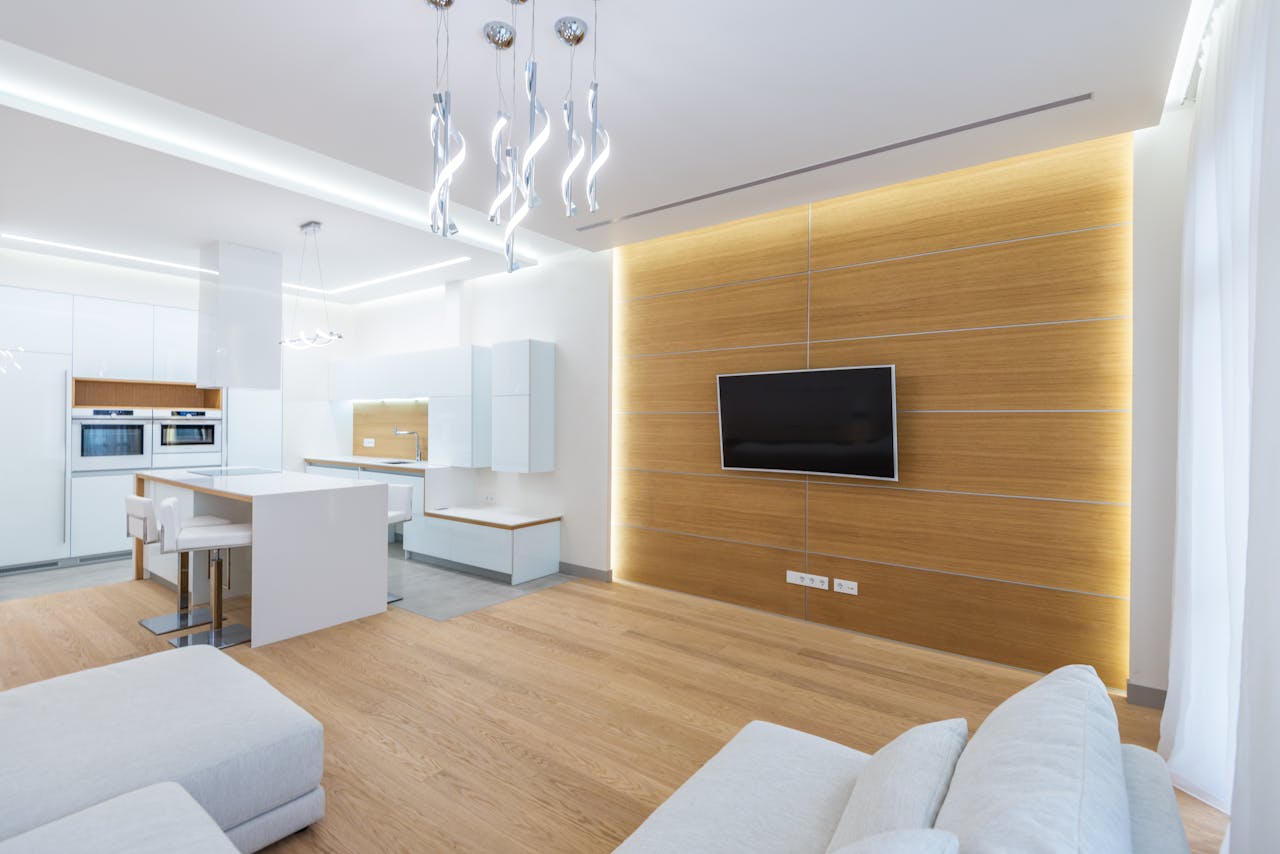As an experienced electrician at Q&E, I often get asked about the ins and outs of LED lighting installations. My journey into this field was a bit of a comedy of errors. Picture this: a young lad who fancied himself a bit of a handyman, attempting to fix a faulty light switch and ending up electrocuting himself. That sparked my interest (pun intended) in learning the proper way to handle electrical systems. Now, I’m here to share some valuable tips and insights for beginners looking to venture into the world of LED lighting installations.
Why Choose LED Lighting?
Before diving into the how-tos, let’s briefly discuss why LED lighting is a fantastic choice. LEDs are energy-efficient, long-lasting, and provide excellent lighting quality. They are perfect for both residential and commercial spaces, offering significant savings on energy bills and reducing maintenance costs. At Q&E, we’ve seen firsthand how LED lighting installations can transform a space, making it brighter and more inviting.
Getting Started with LED Lighting Installations
Understanding the Basics
The first step in any successful LED lighting installation is understanding the basics. LEDs (Light Emitting Diodes) are semiconductor devices that convert electrical energy directly into light. Unlike traditional incandescent bulbs, LEDs don’t use a filament that will burn out, which makes them much more durable and efficient.
Selecting the Right LED Lights
Choosing the right LED lights for your installation is crucial. Consider factors such as brightness (measured in lumens), colour temperature (measured in Kelvin), and the type of fitting (such as GU10, E27, etc.). For a cosy, warm light, look for LEDs with a colour temperature of around 2700K-3000K. For a brighter, more energising light, aim for 4000K-5000K.
Tips for a Successful Installation
Plan Your Layout
Before starting your installation, plan the layout carefully. Identify where you need lighting the most and how many fixtures you’ll require. Consider both task lighting (for areas where you perform specific tasks, like kitchen counters) and ambient lighting (for general illumination).
Use the Right Tools
Ensure you have the right tools for the job, including a voltage tester, wire strippers, screwdrivers, and a ladder. Safety is paramount, so always turn off the power at the circuit breaker before starting any electrical work.
Follow Manufacturer Instructions
Always follow the manufacturer’s instructions that come with your LED lights and fixtures. This will ensure that you install them correctly and safely. If you’re ever in doubt, don’t hesitate to consult a professional.
DIY Tips
Installing LED Strip Lights
LED strip lights are a popular DIY project because they’re versatile and easy to install. Measure the area where you want to install the strips, cut them to the desired length, and attach them using the adhesive backing. Connect the power supply, and you’re good to go!
Replacing Traditional Bulbs with LEDs
If you’re simply replacing old incandescent or CFL bulbs with LEDs, it’s a straightforward process. Make sure the LED bulb is compatible with your existing fixture, screw it in, and turn on the power.
When to Call a Professional
While many LED lighting installations can be done DIY, there are times when it’s best to call in the experts. If you’re installing new fixtures, dealing with complex wiring, or if you’re unsure about any part of the process, it’s wise to get professional help. At Q&E, our team of qualified electricians is always ready to assist with any installation, ensuring it’s done safely and to the highest standards.
Trends in LED Lighting
Smart LED Lighting
One of the latest trends in LED lighting installations is the integration of smart technology. Smart LEDs can be controlled via smartphone apps or voice assistants, allowing you to adjust brightness, colour, and even set schedules.
Energy-Efficient Designs
As sustainability becomes more important, energy-efficient LED designs are gaining popularity. Look for LEDs with high energy efficiency ratings to get the most bang for your buck and reduce your carbon footprint.
Final Thoughts
LED lighting installations offer numerous benefits, from energy savings to improved lighting quality. By understanding the basics, planning your layout, and knowing when to call in the pros, you can successfully brighten up your space. Whether you’re a DIY enthusiast or prefer professional assistance, Q&E is here to help with all your LED lighting needs.
Remember, the right LED lighting installations can make a world of difference in your home or business, providing efficient, long-lasting illumination that enhances any space. So, get started on your LED lighting journey today and experience the benefits for yourself!
